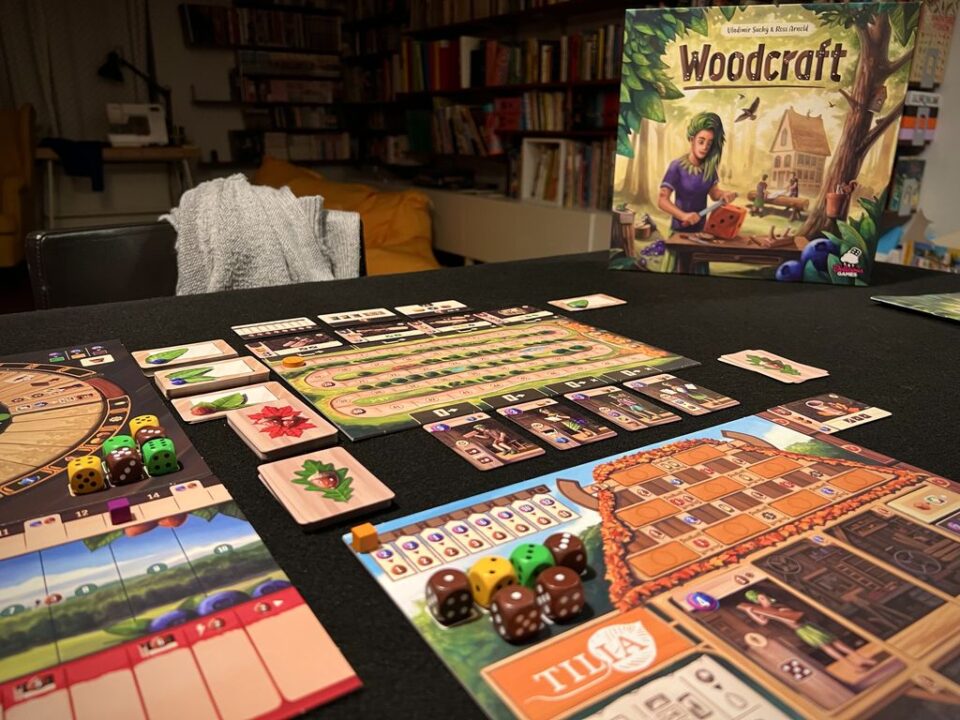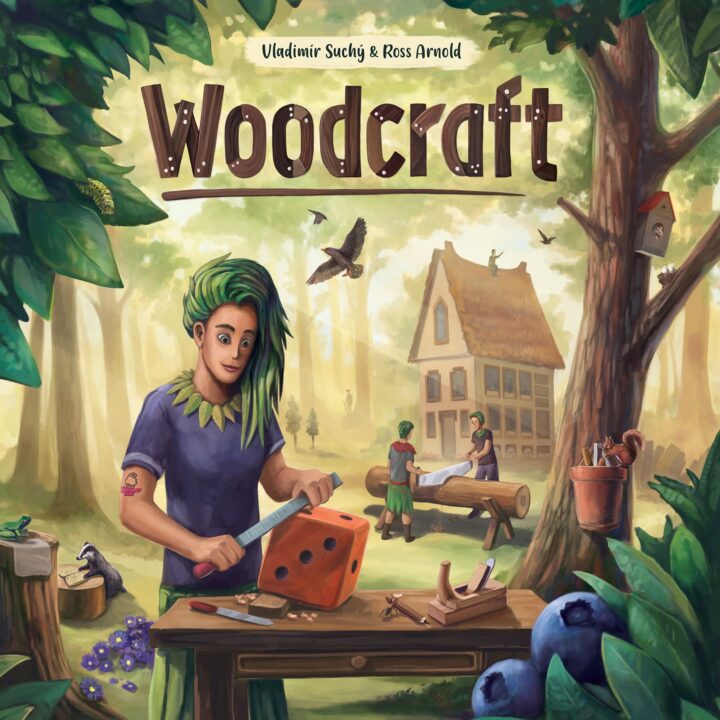Overview
Embarking on a journey through the intricate and immersive world of board gaming often leads one to unique and enthralling discoveries. Today’s voyage brings us to the verdant realms of Woodcraft, a game that’s been on the lips of many contemporary players. This is not just a review; it’s an exploration of how Woodcraft stands out in a crowded field through its remarkable gameplay mechanics, enhanced by social interaction and its innovative design principles.
How It Plays
Setting up
Woodcraft begins with laying out the modular game board, representing a vast, untapped forest ripe for exploration. Each player chooses a faction, receives starting resources, and places their headquarters on predetermined spots on the board. Players then draw starting hand cards from a collective deck, setting the stage for a fiercely competitive lumber empire building.
Gameplay
Turns progress in a sequence of phases – gather, trade, and build. Players deploy workers to collect wood, trade resources at the market to maximize efficiency, and use gathered materials to construct buildings or craft tools, each action intricately linked to the next. The real challenge, and thrill, comes from optimizing these actions while anticipating and countering the strategies of fellow players.
Winning the game
The path to victory in Woodcraft involves a mixture of strategy and adaptation. Players earn points by completing objectives, building structures, and amassing wealth. The game concludes at the pre-determined round, and the player with the most points carved through their savvy resource management and strategic foresight is declared the master woodcrafter.
Want to know more? Read our extensive strategy guide for Woodcraft.
The Intricacies of Woodcraft’s Mechanics
In dissecting the layers of Woodcraft, the complexity of its gameplay mechanics stood paramount, shaping memorable nights around the table. Initially, wrapping one’s head around the synergy between resource management and strategy feels akin to solving a captivating puzzle. In my history with the game, those initial sessions paved the way for a profound appreciation of its depth.
Rich Strategy
Transitioningfrom the basics to mastering strategic depth, Woodcraft offers a versatile playstyle that caters to both casual and hardcore gamers alike. An example from a particularly tense session involved a last-minute comeback, a testament to the game’s dynamic nature and balanced mechanics.
An Ever-evolving Experience
Interestingly, each playthrough unveils new tactics and challenges, ensuring the experience remains innovative and fresh; something that keeps our group coming back.
Moving onto the next cornerstone of a phenomenal board game experience, we’ll dive into how Woodcraft enhances social interaction among players.

The Heart of Gaming: Social Engagement in Woodcraft
During our countless evenings with Woodcraft, the laughter and debates around the table were as memorable as the gameplay itself. The game’s mechanics cleverly encourage player interaction, making each session a social event rather than a solitary struggle.
Bringing Players Together
One standout feature is the game’s unique trading system. At one point, negotiating for resources transformed my quietest friend into a master debater—an unexpected and delightful outcome!
Collaborative Challenges
Besides trading, Woodcraft’s cooperative challenges force players to communicate and strategize together. Successfully overcoming these obstacles felt like joint victories, further strengthening our bonds. Truly, Woodcraft excels at turning an ordinary night into an extraordinary gathering.
This seamless fusion of gameplay and socialization paves the way for discussion on the next exciting aspect of Woodcraft: Innovative design implementation.
Innovative Designs in Woodcraft
In my quest for board game gems, Woodcraft stood out for how it integrates innovative design elements within its gameplay. During our play sessions, there was an unanimous appreciation for its unique mechanics. Firstly, Modular Board Layout adds a layer of unpredictability and ensures no two games are the same. Then, the concept of Dynamic Resource Management keeps everyone on their toes, adapting strategies in real-time.
Adaptability Challenge
One gameplay aspect that got our group talking was how adaptable the game made us. Facing different challenges each session pushed us to think creatively. It’s not just about building, it’s about evolving.
User-Centric Innovation
Clearly, the game designers paid close attention to user experience, marrying complexity with accessibility. This sweet spot of innovative game design is what sets Woodcraft apart.
Considering all this, I undoubtedly recommend Woodcraft for anyone looking for a refreshing board game experience.
Conclusion
As we wrap up this review of Woodcraft, it’s clear that its blend of complex mechanics, engaging social interaction, and innovative design make it a standout board game. From strategic gameplay that challenges the mind to social dynamics that enliven every session, Woodcraft proves itself as a game not just of skill, but of communal fun. The unique manner in which it blends various elements to enhance the player experience speaks volumes of its creativity. Whether it’s setting up the board, navigating through the game, or strategizing to win, every aspect of Woodcraft has been thoughtfully crafted to ensure maximum enjoyment and replay value. So, if you’re on the lookout for a board game that combines depth with fun, Woodcraft should undoubtedly be your next pick.


